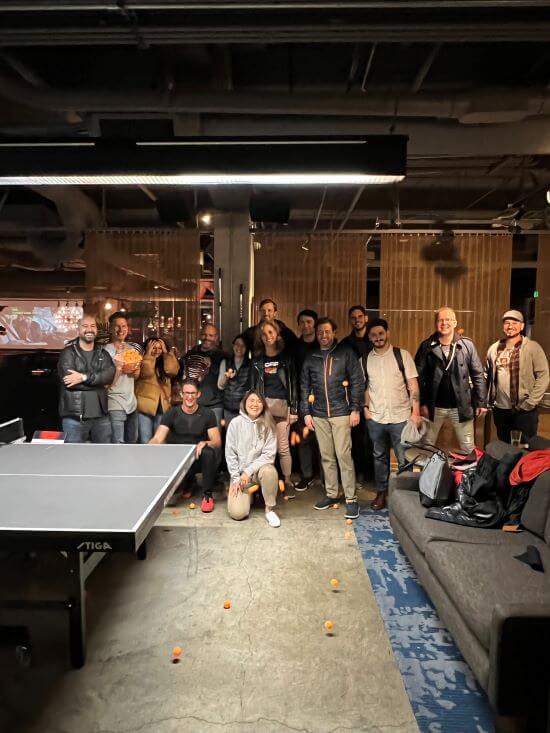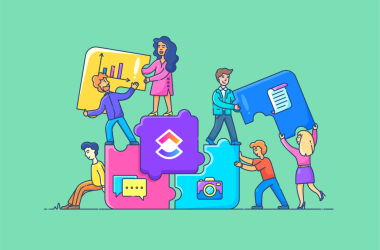Can a single course change your career trajectory? For Mike Donovan, Senior Vice President of Product at Sauce Labs, the answer to that question is a resounding yes.
Can a single course change your career trajectory? For Mike Donovan, Senior Vice President of Product at Sauce Labs, the answer to that question is a resounding yes. – Tweet This
Mike—along with several dozen of his coworkers—enrolled in the Continuous Discovery Habits Master Class. Through the course, Mike developed his listening skills, created better relationships with members of the sales team, and began to use the insights he gathered to improve the product offering, make a positive impact on company revenue, and earn several promotions along the way.
Mike attributes his promotion from Group Product Manager to Director and eventually Senior Vice President to the skills he developed in the Master Class, but the impact ripples beyond changes to his job title. Mike now believes the majority of the Sauce Labs product team is committed to discovery and confident in their ability to innovate. They’re no longer simply “project managing” requests from sales, but using the insights they’ve gained from customers to bet on products and features that are making a genuine impact on the company’s revenue.
We caught up with Mike to learn how he was able to use the skills he gained in the Master Class to build a culture of discovery and innovation at Sauce Labs.
Meet the Continuous Discovery Champion, Mike Donovan
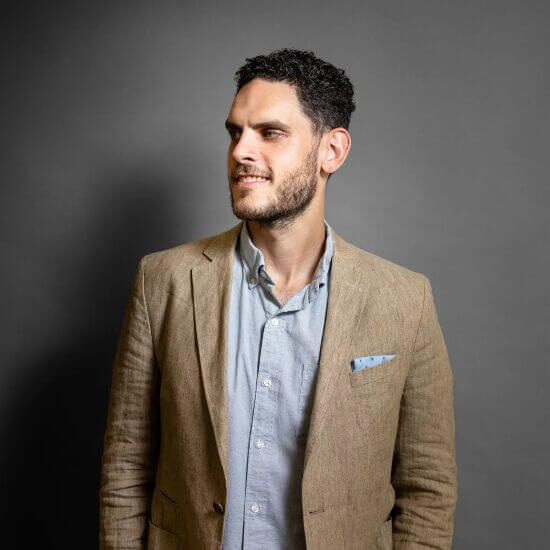
Mike Donovan, Senior Vice President of Product at Sauce Labs
Mike Donovan is the Senior Vice President of Product at Sauce Labs, a company that offers automated testing and error monitoring solutions and helps customers like Verizon Media and Walmart develop, test, and deliver high-quality web and mobile apps at enterprise scale.
Mike began his career as an engineer and transitioned into product about five years ago. While he’s worked in a range of roles and companies, he describes his focus as building enterprise applications for some of the largest companies.
When it comes to his product philosophy, Mike says, “I believe that the only value a product team delivers is by releasing working code to production that solves a real business need.”
I believe that the only value a product team delivers is by releasing working code to production that solves a real business need. – Tweet This
Mike’s Early Days in Product at Sauce Labs
When Mike first joined Sauce Labs in December 2020, he says the product org was “the extreme picture of a feature factory.” Back then, the sales team would pass customer requests to the product team, who then had to essentially project manage the development and delivery of these features.
The results were apparent to Mike—Sauce Labs wasn’t reaching its full potential for growth, and the company was at risk of being edged out by competitors who were responding better to customers’ needs.
Mike joined the product team right around the same time as Susannah Axelrod, the former VP of Product at Sauce Labs, and realized they shared the same values. “We believe that innovation stems from truly understanding the problems that we are trying to solve instead of just implementing a solution,” says Mike.
We believe that innovation stems from truly understanding the problems that we are trying to solve instead of just implementing a solution. – Tweet This
Unfortunately, the organization around them wasn’t set up to support this way of thinking. “The culture wasn’t there to even think about that, nor were the skills across the product management organization,” Mike explains.
It was around this time that Sauce Labs hired Product Talk to run a private cohort of the Continuous Discovery Habits Master Class for 36 of their product team members in August 2021 (another group of 40 from Sauce Labs would later join a private cohort in October 2021 as well). Mike says it was beneficial both on a team and personal level: “We learned so much as a group. I personally benefited from learning how to truly identify a problem and really get into the behavioral psychology around how people tell you the ideal story instead of the actual story.”
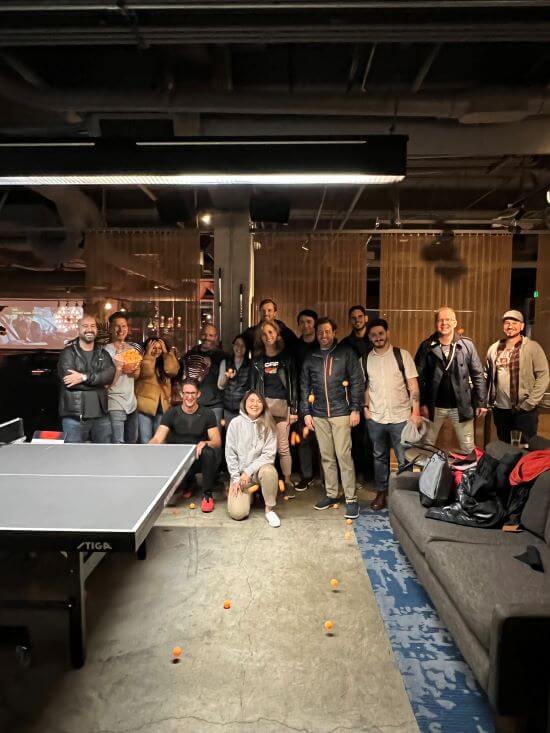
A few members of the product team at Sauce Labs taking time to socialize (and maybe share some learnings from the Product Talk Master Class?).
Reflecting on the experience, Mike says, “The Master Class gave us the confidence to collect actual stories so we could get our company back to a stage of growth and innovation.” How exactly did this happen? We’ll explore this transformation in more detail in the rest of this post.
The Product Talk Master Class gave us the confidence to collect actual stories so we could get our company back to a stage of growth and innovation. – Tweet This
Early Continuous Discovery Habits: Getting Started by Participating in Sales Conversations
After completing the Master Class, one of Mike’s first steps was getting the product team to regularly participate in sales conversations. This might sound simple, but in reality it took a lot of time and effort. Mike explains, “As an enterprise sales business, I had to really convince the sales team that we were not asking them or customers to do more work, we were not asking to slow down their process and their sales cycle; we were looking to speed it up. My job is to put food on their table, and I would do so by discovering the customer’s true needs.”
Mike believed that many customers’ needs could be solved with the current product at the time, but people didn’t know how to ask for the right solution. If he could participate in sales calls, he argued, he could pivot the solution to meet the customer’s needs so the sales team could close deals sooner. “If there does happen to be a gap, the faster that we understand that gap and problem, the faster we will actually fix it and then ultimately grow revenue. I had to do a lot of selling on that,” says Mike.
His approach involved a lot of presentation and repetition of specific examples. “Every chance I got with a customer in front of the sales team or with the sales team, I would try to literally help them close whatever deal possible. At the same time, I would use the opportunity to also do research and discovery about what the true need was.” Next, Mike would catalog all of the examples he’d built up and present them to the sales team. “I would always have three examples in my back pocket about how the sales cycle was shortened from bringing the product manager along to help close the deal and do discovery about what problems the customer had. It was very example-driven,” says Mike.
I would always have three examples in my back pocket about how the sales cycle was shortened from bringing the product manager along to help close the deal and do discovery. – Tweet This
He adds that he had to be very proactive about getting invited to these calls. He’d see a particular problem or feature request and then he’d ask to participate in that specific call. He’d do his homework ahead of the call so he could provide more support and actually help resolve the issue. “But my subliminal purpose there was to really do discovery,” says Mike. “Yes, of course, we helped customers, but I was actually there to discover their true needs rather than solve their one problem.”
Mike says this approach was key because he didn’t want the sales team to feel like he was slowing their process down. “In an enterprise organization, I think we all have to understand we’re here to build revenue both near term and long term,” he explains.
In an enterprise organization, I think we all have to understand we’re here to build revenue both near term and long term. – Tweet This
The Next Major Step in Discovery: Introducing Outcome Thinking
Another critical point on Sauce Labs’s continuous discovery journey involved beginning to think in terms of outcomes. Mike says, “It seems more like a journey than a destination because I’m always learning about how to better orient myself around the business metrics.”
His goal is to get the product team organized around the product outcomes that drive the business and to connect the dots from the business metrics to the product metrics to the feature adoption metrics.
At Sauce Labs, this started by organizing the product and engineering teams by the product line they supported. They refer to these as “value streams.” And Mike explains, “When they report on the health of their product, I don’t ask about roadmaps. Of course, I have to care about delivery timelines, but I really just want product teams to deeply understand the business metrics they are trying to impact, and link them to product metrics they believe are leading indicators of success. The value streams report on these metrics on a bi-weekly basis so that everyone is aligned on what really matters.
Mike admits that this is a really hard thing to figure out, but he encourages teams to just start working this way with the knowledge they have rather than striving for perfection at first. He reiterates that this isn’t something teams get right on the first try. “The first thing everybody does is give me 20 feature metrics because they don’t understand the product metrics. Then they usually get the business metrics, but they don’t understand the connection between everything. Eventually, though, I find that by presenting progress on improving the metrics regularly, it forces the product teams to understand the connections. Teams will start to understand it and really whittle it down to the concise list of metrics that matter and can make the connection points.”
Another Critical Step: Consistently Collecting Customer Insights
Mike says another key step in Sauce Labs’s continuous discovery journey was beginning to consistently collect insights from customers, especially from teams outside of product. “We have a plethora of discovery notes and insights. Everybody’s really good now at sharing information with us as a product team.”
Sauce Labs uses Productboard to collect these insights, and Mike says that while it’s good at collecting these unstructured insights from various sources, it can lead to information overload. “We have a lot of customers. They have a lot of needs, a lot of problems we could be solving for them, a lot of areas to improve the business. We struggle to keep our heads above water with all the incoming insights that we could be learning from.”
But compared to the situation when Mike joined and he had to advocate to participate in sales calls, this is a good problem to have and an indication of how far they’ve come.
It’s also important to note that adopting continuous discovery habits is an ongoing process everywhere, and Sauce Labs is no exception. “There’s pockets of greatness, but it’s not consistent everywhere,” says Mike. “I’m really proud of how far we’ve come and we’re constantly retrospecting on our process to improve it.”
With continuous discovery, there’s pockets of greatness, but it’s not consistent everywhere. I’m really proud of how far we’ve come and we’re constantly retrospecting on our process to improve it. – Tweet This
Committing to Continuous Discovery Fuels Mike’s Professional Success
Getting the sales team bought into the idea of discovery, coaching the product team to think in terms of outcomes, and encouraging everyone to collect insights from customers were already major wins at Sauce Labs. But Mike says that’s not the only benefit he’s gained from participating in the Master Class.
As he was learning how to discover customer problems in a sales-led organization, Mike realized he was also discovering a lot about where the product needed to improve the customer experience in ways that would help grow revenue. “I was essentially responsible for over half of the revenue, even though I wasn’t really enabled or empowered to own it, but I didn’t care. I could see growth slowing. I could see why we were losing. I was hearing it directly from hundreds of customers now that I was involved in so many customer conversations with the sales team.”
Because Mike was able to directly connect his work to the company’s revenue, he began to quickly progress up the career ladder. “I was a group product manager for six months. I got promoted to director within six months. Then I think about six months later, I was a VP. Within another year, I was a senior VP.”
Mike says it’s clear to him that this progression is connected to what he learned from the Master Class and Continuous Discovery Habits. “It all goes back to that journey of discovering what our customers truly need and then coming up with engineering-led solutions that were outcome-driven, focused on what really drove revenue, frankly.”
Drilling down into a specific example, Mike says there was a push to diversify their portfolio of products that wasn’t trending toward the desired results. We don’t need to get too into the weeds here, but suffice it to say that this product impacts the engineering velocity of Sauce Labs’s customers. The faster it works, the faster engineers who use this product can release code.
Once again, Mike turned to what he was hearing from customers in discovery: “I’m hearing from customers what they really need. They need the basics. They needed our platform to be fast and reliable. So I had to orient the team around the outcome of improving performance. I even had to get buy-in from leadership that we didn’t have the right outcome as a product because we were missing this performance metric that our customers needed us to improve.”
With the right outcome set, next came the solution. Yet again, this was not easy, but Mike persisted. Mike explains, “I remember hitting walls because people were confined by constraints that didn’t exist. They really thought they had to stay within the user experience of the current system.” But Mike challenged them to wipe it all away, erase all those constraints, and just focus on the outcome of improving performance. He continuously challenged the team to come up with new ideas to solve the problem.
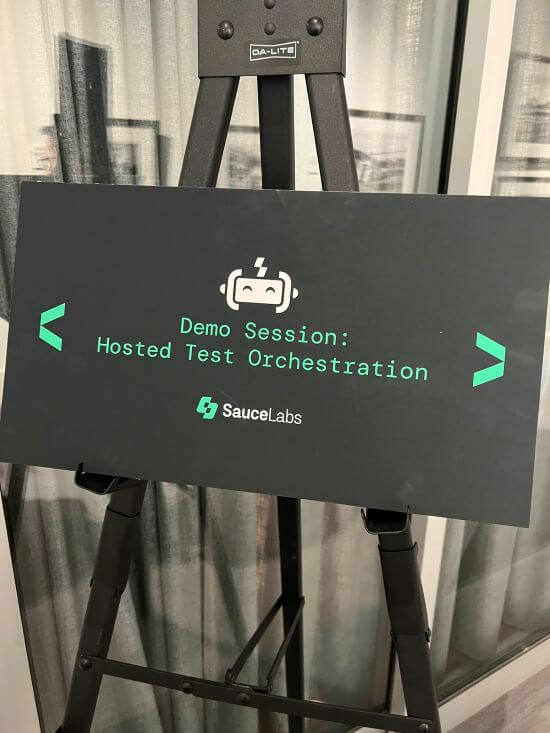
Hosted Test Orchestration was one of the products that, thanks to discovery, helped Sauce Labs diversify their portfolio.
And it worked! The team came back with an approach that solved the customer problem and also introduced a completely new way for users to interact with Sauce Labs. “It made everything 50% faster and really solved the actual problem. Not in the way that anybody was asking us to solve it, but in a brand-new interaction mode,” says Mike. “I took that idea and then created a new product where speed was a value proposition, along with ROI and cost reduction. That turned into a new product offering that we launched earlier this year that is on track to not only build revenue but keep us very competitive in the market and resolve some of those customer challenges.”
Summing it all up, Mike says it’s really thanks to discovery that he was able to achieve this. “It all came from really listening to what people were asking for, and using every opportunity from sales and support conversations to discover their true needs.”
And perhaps the biggest benefit of all is that going through this experience has given the Sauce Labs team the confidence to try new things in the future. “The company now has a repeatable way to develop innovative ideas.” says Mike. “We’re not afraid to launch new products and capabilities before they are 100% perfect. We trust that our discovery process will guide us through each iteration, ultimately achieving the outcome we set out to. And I think that’s critical to the future success of the company.”
We’re not afraid to launch new products and capabilities before they are 100% perfect. – Tweet This
Key Learnings and Takeaways
The Sauce Labs product team has clearly undergone a significant transformation since they’ve begun to adopt continuous discovery. Reflecting on his experience, Mike offers a few key learnings and takeaways.
Continuous discovery is a collection of habits
Mike finds that there’s an ongoing tension between the idea of continuous discovery as a process vs. habits. “Everybody thinks it’s a process that you follow. Then when you veer off a little bit, they throw their hands up and they say you’re not doing it and therefore, everything’s invalid. Or people look for a very structured way to do a user interview or do discovery.” Mike believes it’s important to challenge the idea that continuous discovery is a strict process and accept that it’s actually a set of habits that you do every day.

Mike believes regular habits, like speaking with customers and identifying opportunities, are the key to discovery.
Every individual contributor has more remit than they tend to give themselves credit for
Similarly, Mike sees many people waiting for someone to provide a structure or process for continuous discovery, but this isn’t actually necessary. “I think that people are waiting for others to build a process when, instead, they need to realize they actually have the agency to do it within themselves, and it’s possible to do it right today. There’s nothing stopping that from happening.”
Everything starts with touchpoints with customers
When Mike first wanted to participate in sales calls, he had to convince salespeople he wasn’t going to slow down their sales process and he even had to take on more of a support role to solve customers’ specific problems. But doing this allowed him to build his case, show the power of discovery, and ultimately grow his influence. As Mike puts it, “Building up these examples over time helped build my own influence in the organization. I think that my impact or influence at this organization is directly correlated with the number of customer calls I had. I think the same goes for every product manager at any company.”
I think that my impact or influence at this organization is directly correlated with the number of customer calls I had. I think the same goes for every product manager at any company. – Tweet This
Want to see your product team’s skills and impact skyrocket? Come join us in the next cohort of the Continuous Discovery Habits Master Class!
The post Product in Practice: Continuous Discovery Fuels Innovation at Sauce Labs appeared first on Product Talk.
Product in Practice: Continuous Discovery Fuels Innovation at Sauce Labs was first posted on January 3, 2024 at 6:00 am.
©2022 “Product Talk“. Use of this feed is for personal non-commercial use only. If you are not reading this article in your feed reader, then the site is guilty of copyright infringement. Please let us know at support@producttalk.org.
